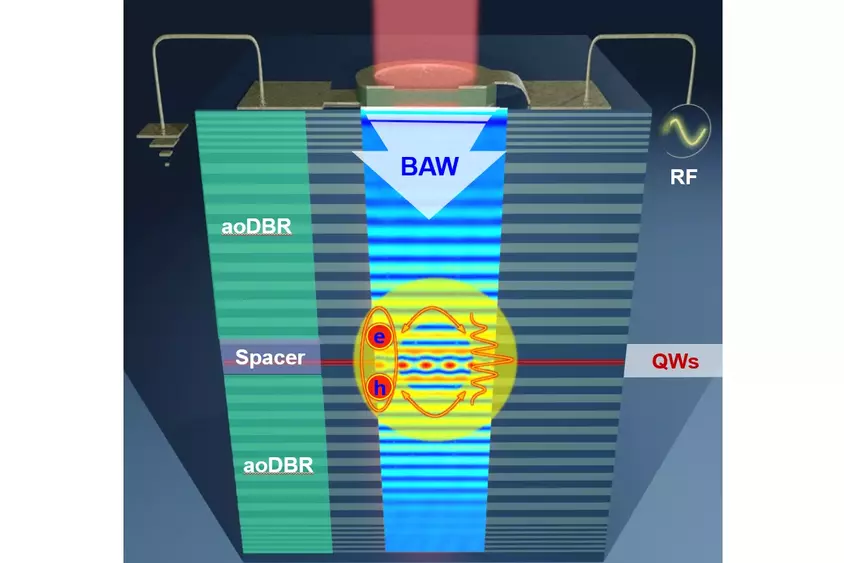Electrically driven GHz sound meets opto-electronic resonators
19.05.2021
Electrically driven, coherent phonons (sound waves in solids) with frequencies in the super-high-frequency (SHF) 3-30 GHz range are an important tool for the coherent manipulation of solid-state excitations. These phonons play a crucial role in optomechanics by enabling processes such as laser cooling of resonators to the mechanical ground state as well as in the quantum-coherent coupling between microwaves and near-infrared photons. Furthermore, phonons interact with many quantum systems, with internal resonances in the SHF range (e.g., spin and superconducting qubits), thus making them important tools for coherent phonon control relevant for quantum computations, communications and metrology. In a recent publication1, Kuznetsov et al. introduce a novel semiconductor platform for GHz optomechanics and addresses main challenges in the field including the on-demand electrical generation and detection of coherent SHF phonons as well as their interactions with low-dimensional quantum systems.

The platform exploits hybrid opto-mechanical microcavities with semiconductor quantum wells, which are designed to simultaneously confine near-IR photons, quantum well excitons, and GHz phonons tightly in the same spatial region (the microcavity spacer, cf. Figure). The strong coupling between photons and excitons gives rise to hybrid light-matter exciton-polariton quasi particles, which strongly interact with phonons.
The epitaxial nanostructure enables high optical and acoustic quality factors (as well as long polariton and phonon amplitudes), which are important considerations for coherent control. An important feature of the platform is the electrical generation of highly monochromatic phonons by piezoelectric transducers fabricated on top of the microcavity. These transducers also act as efficient phonon detectors with a very large dynamical range. Finally, the design also takes advantage of is the almost-perfect acoustic reflections from the polished facets of the wafer. These reflections feed escaping phonons back into the spacer region, thus further enhancing the acoustic quality factor.
The strong phonon field within the spacer regions induces a very large spectral modulation of the energy (in excess of 10 meV) and strength of exciton-polariton resonances at frequencies up to 20 GHz. The energy modulation amplitudes far exceed the spectral linewidths as well as the exciton-phonon Rabi coupling. The electrically driven platform thus opens the way towards electrically driven polariton optomechanics in the sideband-resolved regime at GHz frequencies with an intrinsic interface to near-IR photons. Furthermore, the platform can be extended to the single particle, quantum regime by confining both polaritons and phonons in intra-cavity traps created defined in structured microcavities2.
1Author: Alexander S. Kuznetsov, Diego H. O. Machado, Klaus Biermann, and Paulo V. Santos
Title: Electrically Driven Microcavity Exciton-Polariton Optomechanics at 20 GHz
Source: Phys. Rev. X 11, 021020 (2021) https://link.aps.org/doi/10.1103/PhysRevX.11.021020
2Author: Alexander S. Kuznetsov, Paul L. J. Helgers, Klaus Biermann, and Paulo V. Santos
Title: Quantum confinement of exciton-polaritons in structured (Al,Ga)As microcavity
Source: Phys. Rev. B 97, 195309 (2018) https://journals.aps.org/prb/abstract/10.1103/PhysRevB.97.19530